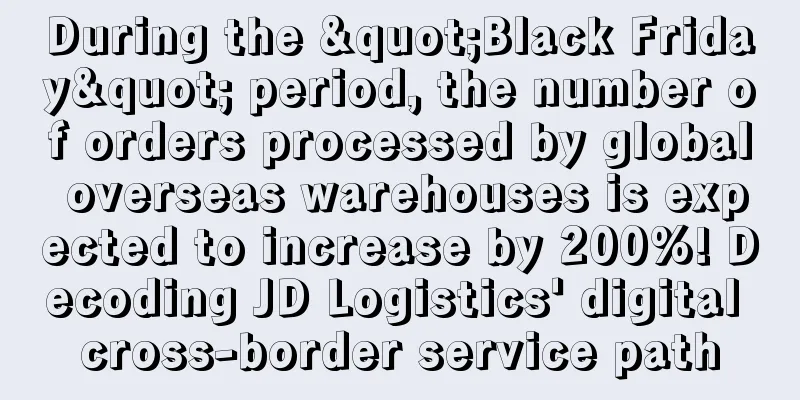Amazon is testing a new page, and new products win!

|
On the search results page, Amazon is testing the removal of product reviews in order to save space and make search results more compact, allowing customers to quickly browse products and make purchases. The industry believes that this will be an opportunity for new products to be on an equal footing with old products. In the promotion stage, when sellers create coupons or promotions , a new option of "whether to use them in combination" has been added to reduce the risk of purchasing for free due to misoperation.
In terms of fee collection, Amazon officially announced that it will introduce Prime-exclusive discount fees for promotions on the US site. Each promotion will require a $50 activity fee, which is applicable to hot-selling events such as Prime membership promotions, Black Friday, Cyber Monday, Prime membership day, etc. The first charge will be implemented during the Prime membership promotion event held later this year.
To enhance the competitiveness of its platform, Amazon announced that it will reduce the commissions of multiple categories on its Indian site by 3% to 12%, following the reduction of the commissions for low-priced clothing on its North American, European and Japanese sites . The fee adjustment will take effect on September 9. Amazon said that sellers, especially those selling affordable products, will see a significant reduction in fees on Amazon.
How will these changes affect sellers’ operations? This article analyzes each of them.
Amazon tests removing reviews from search pages, good news for new products
After showing sales, in August , some sellers found that the Amazon search page had changed again, with the star rating and number of reviews for some categories disappearing. One seller said: "Since yesterday, I found that some of the front-end pages for products in my category no longer display reviews, and I need to click to enter the page to see them. After communicating with my peers, I found that they did not have this problem. I thought it was a problem with the Amazon system. Today, I searched and found that some categories were gone again."
According to the seller's observation, this situation has occurred in some categories such as maternal and child care, pets, beauty , and personal care . She believes that Amazon's move is to reduce the impact of the number of reviews on product click-through rates and increase the opportunities for new products to enter the market . Sellers need to pay more attention to branding layout. Many sellers agree with this view, believing that Amazon intends to give new sellers more opportunities. However, there are also views that this change is not good for new products. If users click on the product and find that there are few reviews, it will be difficult to form a conversion. Instead, it will push up the ACoS and burn more advertising fees.
Amazon soon publicly said it was testing removing reviews from its search results pages, an attempt to make it easier for shoppers to browse a large number of products.
Amazon told Fortune that this change is indeed a new test rather than a bug. Currently, this "limited test" only affects a small number of products and only affects the search results page. The star rating and total number of reviews can still be viewed on individual product pages. "We are conducting a limited test on a small number of products to improve the product information (including reviews and other attributes) displayed in search results, making the results more compact so that customers can quickly and easily browse a range of product options."
But she did not provide any information on the results of the testing so far or say when Amazon plans to conduct the tests.
An Amazon seller posted a product listing result for searching for "water floss." Previously, the product information displayed in the search results would include five-star and numeric ratings and the total number of product reviews, but in the new test, all rating and review information has been removed from the results page, and shoppers need to click into the product page of each listing to view this information.
This is a big change for both sellers and sellers. As users increasingly use smartphones to shop online, major e-commerce companies have optimized their websites and apps for smaller screens. So how much screen space and customer browsing time can Amazon actually save by removing this line of information?
Dr. Justin Farrell, a marketing professor at the University of San Diego , analyzed that consumers tend to pay more attention to how many reviews there are rather than what the reviews say. "I think Amazon is doing this to change the user interface of the platform because these reviews and star ratings take up space. If you remove the star ratings, you can get more product choices on the browsing page."
For example, searching for dog leashes on a computer only immediately yields five options, and on a phone even fewer. "I only get two recommendations here, and maybe Amazon wants you to see 10. The shorter the time it takes for a consumer to find what they want and keep browsing, the better. If you ask people to scroll, that's just extra effort. So if you can fit two or three more products on the screen, shoppers can see what they like."
After Amazon removed reviews from its search page, consumers may move from the exploration stage to the purchase stage more quickly because more products are displayed on the page and they have less reference data to make decisions.
Another reason why Amazon stopped displaying reviews may be that the authenticity of the reviews has been questioned, and consumers cannot judge whether these reviews are real quality feedback on the product or promoted by celebrities. Therefore, in order to provide a better user experience, Amazon is trying to show buyers the actual sales volume in the recent period instead of ratings.
Some American sellers are dissatisfied and do not want Amazon to delete reviews. This is a bad thing for products with a lot of accumulation, and the click-through rate of products will drop significantly. Products with fewer reviews may become winners, and new products have the opportunity to be on par with old products.
However, the number of reviews has always been an important basis for shopping decisions. Many consumers believe that Amazon's test violates the basic concept of the platform, that is, the more information the better, after all, the transparency of product practicality is important. Although some sellers have taken advantage of the review system by offering discounts or free reviews, the review mechanism can help buyers understand the product before buying it when they cannot see the product in person. Therefore, most consumers do not like this adjustment, and this operation may lead them to other platforms such as Walmart.
The discount prevention function is launched, and sellers give thumbs up
Amazon recently launched a new feature, which has received rare collective praise from sellers.
When creating a coupon or promotion, the system will prompt "Do you want to allow this coupon to be used in combination with a 'Discount' or 'Buy One Get One Free' promotion?" or "Do you want to allow this promotion to be used in combination with other discounts or buy one get one free promotions?" Depending on the seller's choice, the coupon and the "Discount" or "Buy One Get One Free" promotion will be used separately or together at checkout. However, the "Discount" promotion and the "Buy One Get One Free" promotion cannot be combined.
For example, suppose a seller creates both a coupon (10% off) and a "discount" promotion (20% off) for the same ASIN, and both have the same validity period. If the seller selects "Allow stacking" when creating the promotion, the two promotions will be stacked, and the buyer will enjoy a 30% discount at checkout (10% + 20% = 30%). However, if the seller selects "Do not allow stacking", the two promotions will not be stacked, and the buyer will enjoy the higher discount of the two promotions at checkout, which is 20% off in this example.
Amazon strongly reminds sellers to choose carefully when creating promotions. If sellers choose "Allow Stacking", Amazon will not be responsible for providing any refunds. With this feature, sellers can control the number of promotions that buyers can redeem when purchasing the same product.
This will prevent coupons and promotions from stacking, but sellers believe that other types of discounts may not stack, such as social media discounts. According to Amazon, this feature currently only applies to coupons and "discounts" or "buy one get one free" promotions.
After adding the option to the creation page, the probability of sales accidents caused by the superposition of coupons and discounts will be greatly reduced. Before this, there were countless tragedies caused by the superposition of discounts in the Amazon circle. Earlier, sellers could contact customer service to cancel orders with superposition of discounts, but later Amazon locked this path and customer service no longer had the authority to operate. Once discounts were superimposed, sellers would suffer heavy losses.
One seller said that his product was sold at 0 yuan due to discounts , and the overall loss was 100,000 yuan. He opened many cases and tried to cancel it with templates, but it was useless. Another seller had a similar situation: "FBA really cannot cancel. We tried it a while ago. The product with a regular price of 159 euros was sold out at around 20 euros. We couldn't open a case or anything. Fortunately, there were only more than 30 stocks, so the loss was not much."
So if you accidentally cause discounts to overlap, how can you cancel the order to stop the loss? Many experienced sellers suggest that you contact the payment manager urgently. This method has a cancellation rate of up to 95% within 2 hours, and only about 50% after 5 hours. The later you handle it, the fewer cancellations you will get.
A seller who experienced 0 yuan purchase said that his 5,000 pieces of inventory were sold out in seconds. Three buyers placed orders of 1,000 pieces each. The service provider could not handle it. The account manager told him that he could cancel the order through the paid manager, and he had no choice but to agree. In the end, the seller canceled half of the orders, including the three orders of 1,000 pieces, and with the paid manager fees paid, he ended up losing 60,000 to 70,000 yuan.
He couldn't help but sigh: "This is indeed a huge blow, it's possible to go back to the days before liberation overnight. In short, if you encounter this, find your account manager or payment manager as soon as possible, the sooner the better, because the goods purchased for 0 yuan are shipped very quickly, all delivered the next day, and there is no way to cancel them once they are shipped."
Amazon officially announced that it will charge $50 for Prime exclusive discounts during the promotion period
A few days ago, Amazon announced that it will launch this year's Prime membership promotion in October. The promotion will be held in 19 countries including Australia, Austria, Belgium, Brazil, Canada, France, Germany, Italy, Japan, Luxembourg, the Netherlands, Poland, Portugal, Singapore, Spain, Sweden, the United Kingdom, Turkey, and the United States.
During the promotion preparation period, sellers can view the promotion submission page through Seller Platform > Advertising > Flash Sales > Create New Promotion Path. Earlier, there was news that Amazon will start charging for Prime exclusive discounts during the promotion. Now the US site has officially announced this change to sellers.
Starting August 14, 2024, Amazon will begin to introduce Prime exclusive discount fees for promotional activities in the US mall, and the first charge will be implemented during the Prime membership promotion event held later this year. Prime exclusive discount fees apply to popular sales events, including Prime membership promotions, Black Friday, Cyber Monday, and Prime Member Day (fees will be applicable starting in 2025). Sellers do not need to pay any fees for Prime exclusive discounts launched on non-event days.
In terms of specific fees, each Prime exclusive discount promotion that is carried out during the event and receives a special event mark will be subject to a $50 event fee, but adding multiple products to the promotion will not increase this fee. Prime exclusive discounts can include up to 500 SKUs. For example, whether it is 20 items or 100 items, Amazon charges a $50 event fee for its Prime exclusive discounts.
This fee is charged after the event period ends, and Amazon will only charge this fee if at least one item with a Prime-exclusive discount is sold during the event period; if no Prime-exclusive discount items are sold, the seller does not need to pay any fees.
When a seller creates a Prime exclusive discount for an event for the first time, the platform system will display relevant information, prompting the event fees that will be incurred - "Your Prime exclusive discount requires a fee to obtain a special event tag. The event fee is US$50." After submission, the seller can view the fee information on the Prime exclusive discount details page in the background.
Amazon emphasizes the great value of launching Prime-exclusive discounts during major sales, such as promotional features, badges, and savings highlights displayed in search results and product detail pages. Through this discount measure, sellers can use special event badges to increase brand exposure and product sales during these high-traffic events.
Previously, Prime exclusive discounts can show discounts without spending money to sign up, so sellers often use them in promotions. Amazon discovered this feature and turned this discount into a fee item. "How much did Amazon charge this year? This charge is just a drop in the bucket for many SKUs, but if you are a small seller with only a few SKUs, wouldn't it make things worse?" the seller said dissatisfiedly.
Commissions for multiple categories have been reduced, this time for the Indian site
In response to competition from platforms such as Temu, Amazon has lowered its commissions several times this year. After lowering the sales commissions for low-priced clothing products on sites in North America, Europe, and Japan, Amazon Japan will lower its sales commissions to 5% for products with a unit price of less than 750 yen from June 1, with a minimum commission of 30 yen per item (excluding books, music, videos, DVDs, software, and video games). For products with a unit price of less than 1,000 yen, the delivery fee will be reduced by 66 yen compared to the standard rate. Amazon India announced on Saturday that it will reduce the commissions of multiple product categories on the marketplace by 12% ahead of the holiday season, with the reduction in fees taking effect from September 9.
"With these changes, sellers on Amazon India will benefit from lower selling fees across different product categories, ranging from 3% to 12%," the company said. Amazon said the new fee schedule will be particularly beneficial to sellers offering products priced below 500 rupees. Sellers in lower-priced categories such as apparel, home and sports will see their commissions significantly reduced.
"At Amazon, we are committed to supporting businesses of all sizes, from SMEs to emerging entrepreneurs to established brands. The fee reduction is a direct response to feedback from our sellers, especially small businesses," said Amit Nanda, director of selling partner services at Amazon India. The commission cuts are timed to coincide with the Indian festive season, but Amazon said the fee changes are not temporary measures and will remain in effect after the festival.
The fee cuts will give sellers an opportunity to optimize operations during the peak Diwali shopping season and beyond the festive period. “Sellers, especially those selling affordable products, will see a significant reduction in fees on Amazon. This will provide them with an opportunity to reinvest in their business and accelerate growth,” Nanda added.
Amazon also said that as a marketplace, it does not participate in pricing and price changes, and prices are determined by sellers. However, Amazon's reduction in sales commissions will obviously promote sales growth and enable sellers to expand their product portfolio on the platform.
The shopping assistant Rufus has been expanded to the US desktop version.
In February this year , Amazon launched and tested the AI shopping assistant Rufus on a small scale. After several months of testing, Amazon announced the launch of Rufus to all US users before Member Day in July. Now, this new traffic entry, which sellers see as changing the search landscape, has made new progress and has been applied to desktops in the United States and promoted to more sites.
Amazon announced yesterday that Rufus is now available to all US customers in the Amazon shopping app and is currently rolling out to desktop .
Consumers can ask Rufus a variety of questions, and Rufus will share answers based on useful information from product listing details, customer reviews, and community Q&A. For example, customers will ask Rufus questions such as "Is this coffee machine easy to clean and maintain?" and "Is this mascara a clean beauty product?" They will also click on related questions that Rufus displays in the chat window to learn more about the product, such as "What is the material of the backpack?" Customers can also click "What customers say?" to quickly get a useful overview of customer reviews.
This presents consumers with a new and convenient search window. After using it for a period of time, users reported that Rufus is showing products with the right functions, which greatly facilitates shopping.
Amazon shoppers can also quickly and easily access package tracking through Rufus and ask questions like, “Where’s my order?” or more specifically, “When will my dog food arrive?” to find out when they can expect to receive their latest order. They can also quickly access past orders and ask questions that help them make decisions based on items they’ve previously ordered, including, “When was the last time I ordered sunscreen?”
Amazon notes that Rufus is now available to all US customers and everyone can start using it.
At the same time, Amazon India also announced the launch of a beta version of Rufus, which aims to help customers improve their shopping experience and simplify the product search and selection process . Currently, Rufus has been launched in beta to some customers on the Amazon.in mobile app, and will gradually expand to more users in the coming weeks to provide users with personalized shopping suggestions and responses.
Amazon continues to experiment with AI-assisted shopping, and sellers can try to analyze how to use this new traffic entrance to expand sales. |
Recommend
With over 40,000 reviews, Amazon's best-selling product is fraught with copyright infringement!
For cross-border sellers who want to gain a footh...
A new scam has emerged in the cross-border circle, and sellers have been defrauded of hundreds of thousands!
Cross-border e-commerce scams emerge in an endles...
Sales grew only 9% in the first quarter. Is the Latin American online FMCG market weak?
It is understood that due to the increase in prod...
After two major layoffs in one year, is Amazon, the former king, no longer able to survive?
In the past two years, there have been constant r...
What is Alphabet? Alphabet Review, Features
Alphabet is a new company established by Google, a...
Amazon is expected to become the largest retailer in the United States! Prime Day sales will exceed $12 billion
As online shopping has gradually become a subcons...
What is shijiantea? shijiantea Review, Features
In order to convey the exquisite enjoyment of tea ...
TikTok is gaining popularity, and Amazon products are often out of stock
Since its global launch in 2017, TikTok has quick...
Shenzhen Huaqiangbei was closed for four days, and sellers moved goods overnight!
Shenzhen Municipal Health Commission reported tha...
The mainstream of US e-commerce will change! 62% of American consumers choose DTC brands
In recent years, DTC brands have developed rapidl...
What is 7wallarts? 7wallarts Review, Features
7wallarts is a leading canvas art manufacturer in ...
The abandonment rate is as high as 70%! What shopping experiences do online consumers value?
With the development of technology and the increa...
The highest one-time award is 5 million yuan! Guangzhou plans to introduce new regulations to build an international hub city for cross-border e-commerce
Recently, the Guangzhou Municipal Bureau of Comme...
What is Siheng Network? Siheng Network Review, Features
Founded in 2006, Siheng Network is a technology c...









